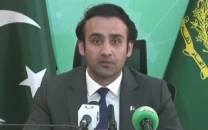Latest Pakistan-India conflict heats up drone arms race
The drone arms race between India and Pakistan is more than just a matter of technology

Pakistan and India have entered a new phase of their long-standing military rivalry, with the two nations now engaged in a drone arms race.
Following an intense four-day skirmish in May, both countries are ramping up their investments in unmanned aerial vehicles (UAVs), marking a shift in their military strategies.
The fighting, which began on May 8, saw both countries deploying drones for the first time at scale against each other.
The ceasefire brokered by the US has done little to cool the growing drone arms race, with both countries increasing their investments in UAV technology.
Pakistan is working with Chinese and Turkish partners to build more advanced UAVs, as its high-end fighter jets remain outnumbered by India's fleet.
On the other hand, India's drone fleet relies on Israeli-made surveillance UAVs such as the IAI Searcher and Heron, as well as Harpy and Harop loitering munitions—smart weapons that serve as both spy drones and self-guided missiles for precision strikes."
New Delhi also plans to spend up to $470 million over the next two years, with a significant portion of this budget dedicated to combat and surveillance drones.
The push to incorporate UAVs into military tactics stems from their ability to strike targets with minimal risk to personnel and equipment.
Indian military officials have confirmed that drones were deployed in the recent conflict, targeting strategic infrastructure within Pakistan with limited risk of escalation.
Both countries have now recognised UAVs as a powerful tool for military pressure.
By using UAVs, the leaders of both nations can signal strength without committing expensive aircraft or risking personnel.
However, experts caution that this strategy is not without risk, as drone strikes in densely populated or contested areas could still provoke major international repercussions.
Despite the relatively low cost of UAVs compared to traditional aircraft, experts agree that the technology's dependence on critical components from rival nations, particularly China, could pose future challenges.
The drone arms race between India and Pakistan is more than just a matter of technology—it has become a central component of the two nations' broader military and geopolitical strategies, signalling a dangerous new phase in their rivalry.





















COMMENTS
Comments are moderated and generally will be posted if they are on-topic and not abusive.
For more information, please see our Comments FAQ